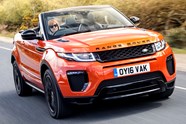
Mercedes-Benz C-Class Cabriolet (2016-2023) review

At a glance
| Price new | £36,745 - £88,620 |
|---|---|
| Used prices | £10,083 - £67,466 |
| Road tax cost | £35 - £620 |
| Insurance group | 33 - 50 |
Get an insurance quote with

|
|
| Fuel economy | 24.6 - 52.3 mpg |
| Range | 363 - 828 miles |
| Miles per pound | 3.6 - 6.7 |
| Number of doors | 2 |
| View full specs for a specific version | |
Available fuel types
Petrol
Diesel
Pros & cons
- Svelte looks, excellent cabin quality
- AMG C 43 performance
- Economy of the C 220 d
- Uncomfortable rear seats
- Manual gearbox best avoided
- AMG handling not up to scratch
Mercedes-Benz C-Class Cabriolet (16-23) rivals
Overview
Since its launch in 2015, the Mercedes-Benz C-Class Cabriolet has established itself as one of the go-to open-topped choices for all those who need classy looks, four seats, and a strong image. The range received a technical refresh and facelift in 2018
It has few direct rivals, but those it has are very, very competitive. It’s up against the Audi A5 Cabriolet and the BMW 4 Series Convertible – the latter, unlike the C-Class Cabriolet, has a folding hard-top rather than a fabric roof. Some used car buyers may also consider the Range Rover Evoque Convertible, although there aren’t many available in the UK judging from its scarcity on the roads.
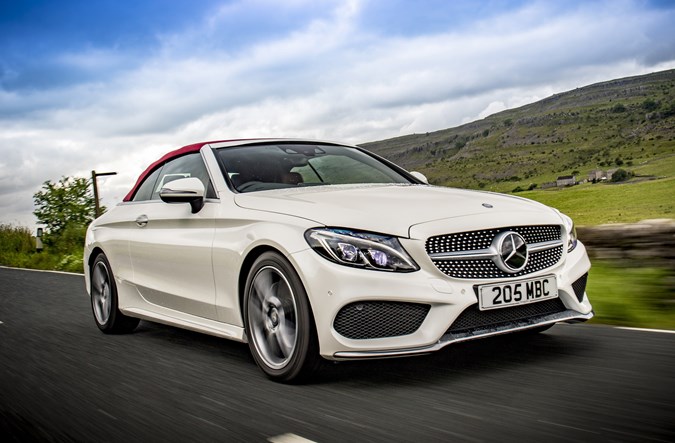
After 2018, the C-Class received a subtle facelift, leaving the appealing styling and interior to the most minimal of makeovers. Tech is much improved, however, with new LED headlamps, an all-new optional 12.3-inch digital instrument pack and upgraded widescreen infotainment that adds Apple CarPlay and touch-sensitive steering wheel controls. New engines complete the refresh, replacing the 2.1-litre diesel with a new 2.0-litre, and adding 1.6 and 1.5-litre turbocharged petrol options.
Compact, premium soft top with practicality
Styling-wise, the Cabriolet mirrors the Mercedes-Benz C-Class Coupe. So, its sleekness is preserved by virtue of the folding fabric soft-top, which concertinas elegantly into the space behind the rear seats. It’s less clunky than the rival three-piece hard-top from BMW and leaves more boot space when stowed.
Not that you buy a four-seater convertible if practicality’s your chief requirement. With the roof raised there is up to 360 litres of boot capacity, shrinking to 285 litres when the soft top’s tucked into the well behind the back seats.
While the cabin essentially apes the other C-Classes, the two seats in the rear are best suited to children. They feel firm, with upright backrests – while kids will be fine with the leg and elbow room, headroom – roof up – is at a premium for adults. A large centre tunnel nibbles into the footwell space too.
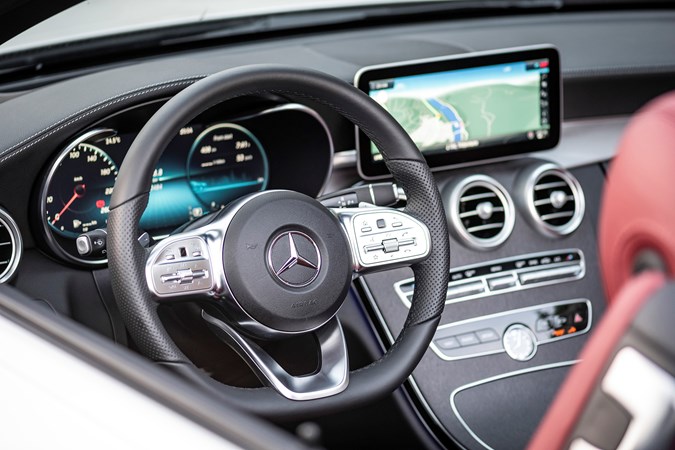
Updated engines for 2018 Mercedes C-Class Cabrio
Following the 2018 facelift, there’s been an adjustment to the model’s engine range. So, there’s a wide range of powerplants although the UK market doesn’t receive all of them. The main difference between the Cabrio and Saloon is that the entry-level C 200 d is not available.
In essence, the line-up mirrors the Coupe, which means you can choose between two petrols (C 180 and C 300), one mild hybrid (C 200, with optional 4Matic), two diesels (C 220 d and C 300 d, both available with all-wheel drive) and a line-up of AMG performance models.
These offer serious performance in true Mercedes-AMG style. For year-round pace the all-wheel drive C 43 4Matic’s 390hp 3.0-litre V6 petrol is impressively quick – and easy to drive too – but for the ultimate performance the rear-wheel drive C 63 and C 63 S Cabriolets offer proper AMG looks and uncouth levels of noise and grunt – up to 510hp from their twin-turbo 4.0-litre V8s.
Extra refinment when the roof’s open
One downside to convertible driving isn’t so much wind-in-your-hair, it’s wind-trying-to-blow-your-hair-off. Back in 2010 when the last generation E-Class Cabriolet was revealed it featured a novel concept called Aircap to reduce the blusteriness, which also makes an appearance on the C-Class Cabriolet.
It’s a two-part device involving a spoiler which rises from the top edge of the windscreen and an air deflector behind the back seats that elevates. For those up front it’s very effective, an increase in wind noise being the penalty. On the downside it’s an eyesore and benefits those in the rear negligibly.
Discontinued engines – buying used means more choice?
Pre-facelift models no longer on sale include the C 220 d and C 250 d powered by the venerable 2.1-litre engine in 170hp and 204hp guises. The new C 220 d is a 2.0-litre that develops 194hp.
The old C 200 has also been superceded by a mild-hybrid featuring EQ Boost for 194hp, and the C 300 remains as a turbocharged four-cylinder with upgraded power, from 245hp to 255hp. There’s a 1.6-litre C 180 with 156hp for the entry level, and this is the only C-Class Cabriolet offered with a manual transmission.



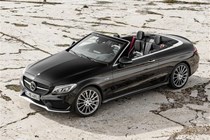




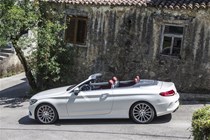
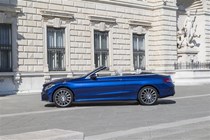
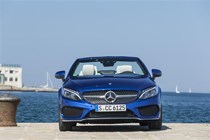
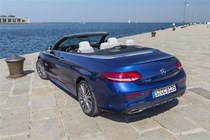
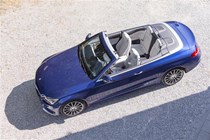
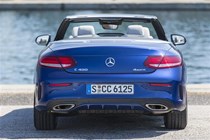
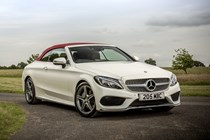
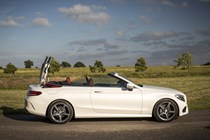
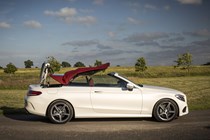
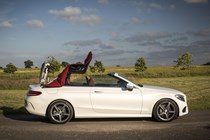
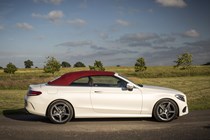
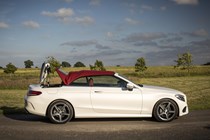
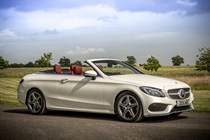
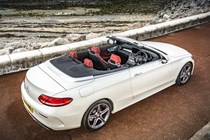
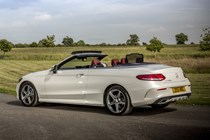
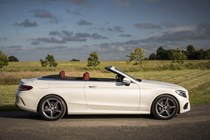
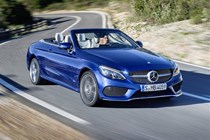

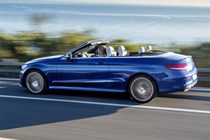
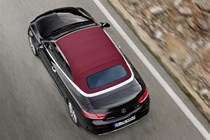
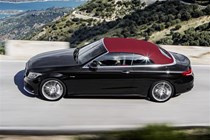
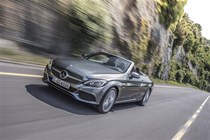
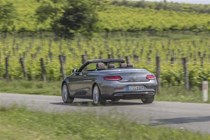
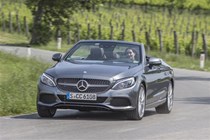
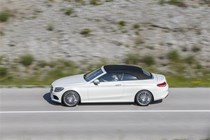


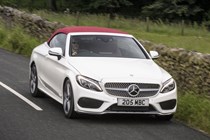
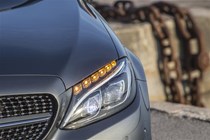
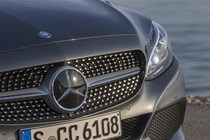
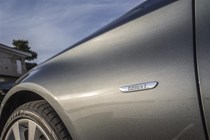
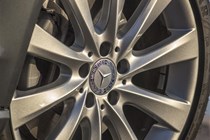
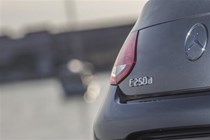
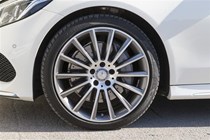

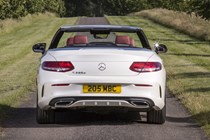
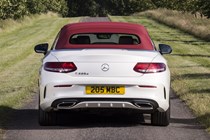
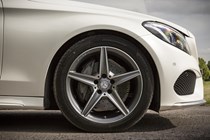
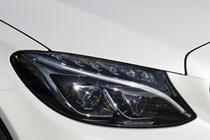
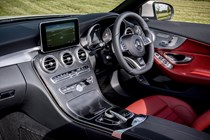
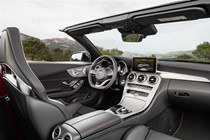
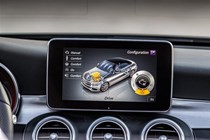

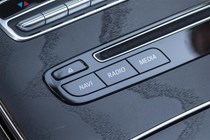
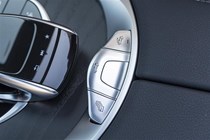

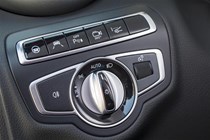
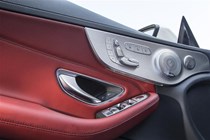
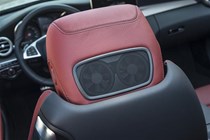
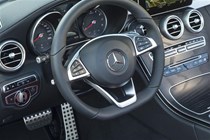
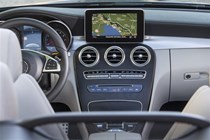
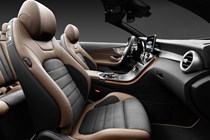
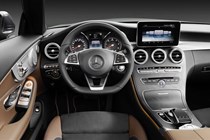
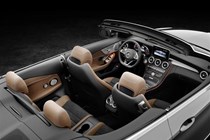
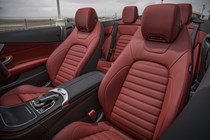
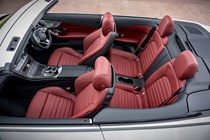

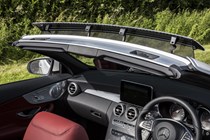
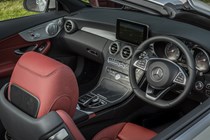
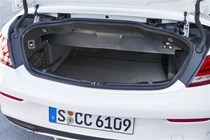
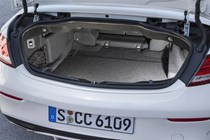


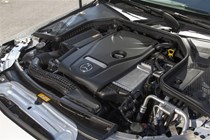

.jpg)
